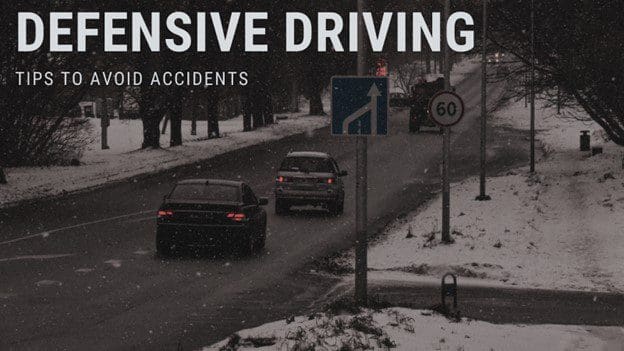There are around 6 million car accidents in the United States every year. Three million people suffer injuries from those accidents, and over 37,000 people die. Many of these accidents could have been avoided if drivers had been more careful. There are steps that drivers can take to reduce their chances of being in an accident.
One important step is to obey the speed limit. According to the National Highway Traffic Safety Administration (NHTSA), driving ten mph below the speed limit can reduce the risk of crashing by up to 50%. In addition, drivers should always wear their seat belts and ensure that all passengers wear theirs.
Another important factor is driver distraction one of The emotional highs and lows of driving in Wiltshire. Cell phones are a major source of driver distraction, so it is important to put them away while driving. Some common causes of car accidents include speeding, reckless and drunk driving. Other distractions include eating and drinking, talking to passengers, and grooming.
If you are involved in a car accident, seeking legal representation from an experienced attorney is important. An experienced lawyer can help you negotiate fair car accident settlements in your state to cover all of your expenses.
Defensive driving techniques
One of the best ways to protect yourself from being in a car accident is to know how to drive defensively. Defensive driving techniques are certain maneuvers behind the wheel to avoid accidents. Defensive driving maneuvers can include changing your driving habits to know what to do when confronted with an emergency.
While defensive driving cannot guarantee that you will never be involved in an accident, it can help reduce your risk of being in one. Defensive drivers are less likely to cause accidents because they know their surroundings and anticipate potential problems by keeping their eyes open for potential hazards and taking evasive action. You should also keep a safe distance between yourself and the cars in front of you so that you have time to react if something happens. If you are ever involved in an accident, your defensive driving skills could mean the difference between getting injured or not.
Another key defensive driving technique is always obeying the rules of the road. It includes following speed limits, using turn signals, and yielding to other vehicles. Remember that it’s not just your safety at stake when you’re driving – the safety of others is also important.
Some important defensive driving techniques are:
Don’t tailgate
Tailgating is when a driver gets too close to the car in front of them, which can be very dangerous. It can cause accidents, but it can also lead to road rage incidents. The best way to avoid this is to allow 1.5-2 feet of space between you and the car in front of you. It will allow you enough time to stop if the car in front of you brakes suddenly. If you are ever in a situation where you feel like being tailgated, then move over into the next lane as soon as possible. Keep calm and drive away from the other car. If a car is tailgating you, try to get into their rearview mirror.

Use your turn signals
Turn signals are the simplest yet most effective defensive driving techniques. They let other drivers know your intentions, which can help prevent accidents. Here are a few tips for using your turn signals:
1. Always use your turn signals when changing lanes, turning, or merging.
2. Make sure your signals are visible to other drivers.
3. Use your turn signals early enough to give other drivers time to react.
4. Follow through with your turns and lane changes. Don’t cancel your signal at the last minute.
Keep a safe following distance
One of the most important defensive driving techniques is maintaining a safe following distance. When you follow too closely, you risk a collision if the car in front of you brakes suddenly. You may also get into trouble if you need to change lanes quickly or if the car in front of you turns off the road.
If you’re driving in heavy traffic, practice the speed limit. If you know that a car is going at an excessive speed, slow down to avoid a collision. Keep your distance from other drivers and let them keep their distance from you.
To maintain a safe distance, follow the three-second rule. Counting “one-thousand-and-one, one-thousand-and-two” will give you enough time to react if the car in front of you brakes suddenly. If there are obstacles on the road, increase your following distance even more.
Drive defensively in bad weather conditions
Bad weather can make for dangerous driving conditions. If you’re not prepared, it can lead to a serious accident. Heavy rains can cause flash flooding. Sleet, snow, and ice can cause a car to hydroplane and lose control. The best way to stay safe in bad weather is to monitor your speed and drive defensively. Pay close attention to road conditions and take evasive action if necessary. If you have to drive in bad weather, make sure your car is equipped with good tires and knows how to use them properly.
Conclusion
It comes as no surprise that car accidents can cause serious injuries. However, what may surprise some people is the amount of money that can be awarded in a settlement. It is important to work with an experienced attorney who knows how to negotiate on your behalf to ensure that you receive the best possible settlement.
An experienced lawyer will know what type of settlement you should be aiming for and will be able to help you get the most money possible. In addition, a lawyer can represent your case in court if necessary. It is especially important if the other driver involved in the accident does not have insurance.
If you have been injured in a car accident, it is important to contact a lawyer as soon as possible. The sooner you start working with an attorney, the more likely you will receive fair car accident settlements in your state.





